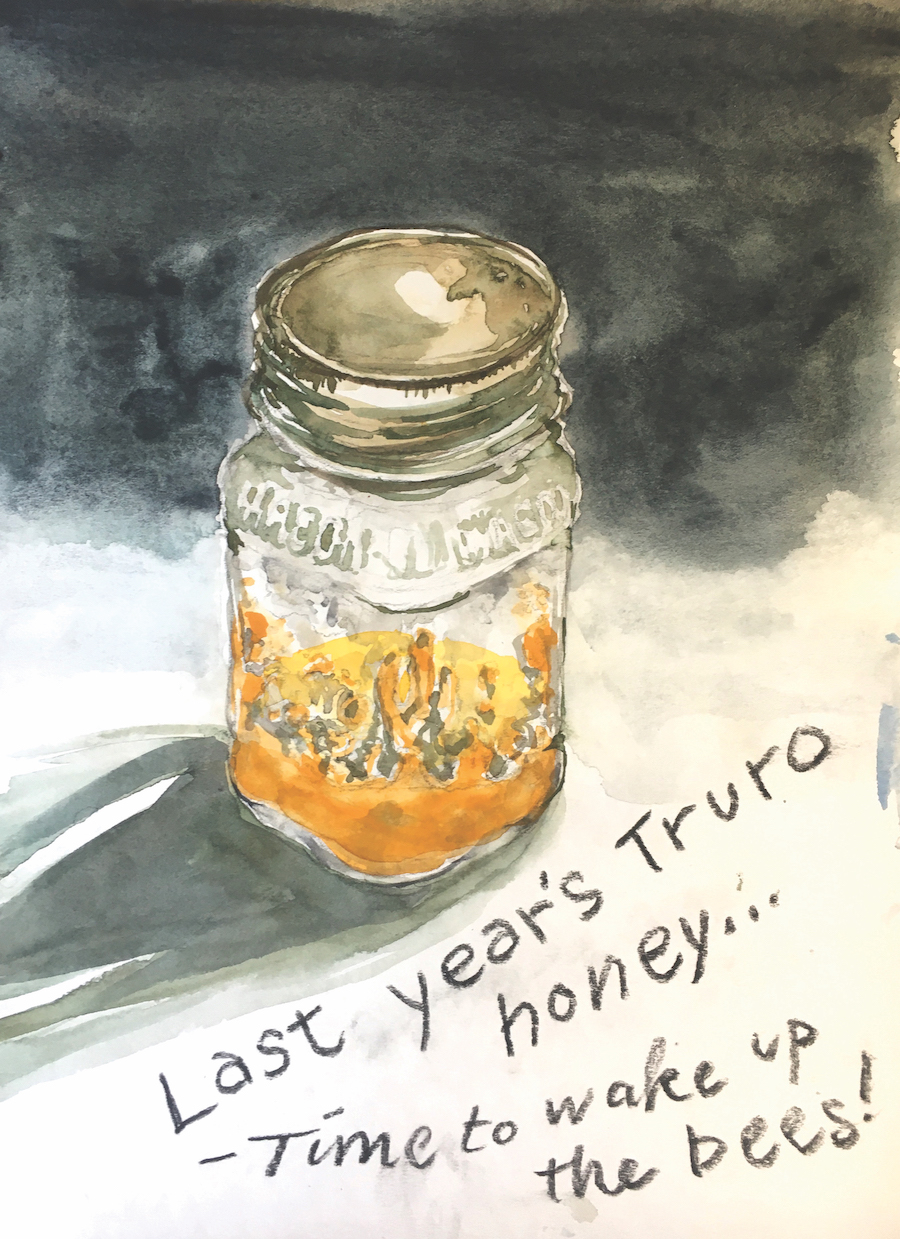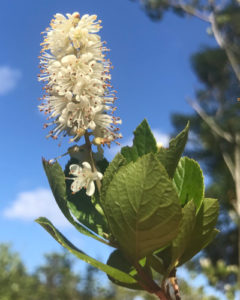
honey
VIEW FROM THE HIVE
Sweet Pepperbush Honey Harvest
The last big nectar flow of the year is happening now
WELLFLEET — In early August, sweet pepperbush, also called summersweet (Clethra alnifolia), comes into bloom where I live, in north Wellfleet. And when it does, the “honey factory” goes into full production.

The bee yard is one loud hum as thousands of bees per minute pour in and out of hive entrances. Foragers streak off to swampy lands and kettle pond shorelines where clethra’s white spikes and penetrating perfume attract insects like a gravitational field. Bees return to cram thorax-to-thorax through narrow hive openings, their abdomens distended with sweet nectar. The chaos continues from just after dawn until dark.
During humid nights, the fragrance of nectar wafts throughout the yard as thousands of hive-bound bees fan the day’s nectar yield — that’s how bees reduce its water content to prevent fermentation. Honey is the result, and the bees’ winter survival depends on it.
Beekeepers learn to anticipate these intense “nectar flow” events. They are discrete and short-lived on the Outer Cape, totaling only five or six weeks per year. The bees must make the most of them or starve while they are clustered against the cold in their hives during our six month–long winter.
Their keepers, too, are dependent on the nectar flows, hoping for good bee flight weather during each one. Cold or wet weather will keep foragers at home and can put a serious dent in the bees’ winter food, and in our hopes for a harvestable excess of honey.
Since 2001, Wellfleet’s major nectar flows have been measured using scale hives, that is, beehives set on platform scales. Tracking these colonies’ daily weight gain throughout the warm months, I’ve seen some colonies bring in nearly 20 pounds of nectar in a single day.
Scale-hive monitoring in our apiary has shown that just four major plant blooms contribute most of the nectar our local bees gather. The first occurs in April with nectar from willows (Salix spp.) and red maple (Acer rubrum). We humans shouldn’t take honey made from it, because the bees need it to build strong colonies as the small overwintered population of bees surges. These blooms bring pollen, too, by the way, which is crucial to the bees’ growth — it is their source of protein.
Next to bloom is beach plum (Prunus maritima), in early May, and black locust (Robinia pseudoacacia), later in the month. Their flowers are promising, but May is often a wet, stormy month out here in the North Atlantic, so bee flight and foraging is often limited while they’re in bloom.
After locust comes winterberry (Ilex verticilata), a native holly that blooms around wetland edges in June, and almost always yields an abundant crop of light-colored and aromatic honey.

The stretch between the June winterberry and this last major nectar flow, with the clethra that is in bloom now, is a long one. You might see bees idly hanging out during that dearth, “bearding” in the cool air outside their hives.
The sweet pepperbush will be our bees’ last hurrah, nectar-wise. The Outer Cape has few open fields for fall flowers like goldenrod and asters. Our remaining undeveloped uplands are covered with oaks and pines, which don’t produce nectar.
Without our native wetland shrubs, winterberry and sweet pepperbush, honey bees probably wouldn’t overwinter here without beekeeper subsidies of sugar syrup.
At this time of year, the beekeeper’s work revolves mostly around the harvest. In early summer, we added boxes of frames for the bees to build comb in and store extra honey. Now we take them off full, the medium-sized ones I use weighing about 50 pounds each. We scrape the wax cappings off the comb, spin out the honey in an extractor, and put it in jars. We make sure to leave plenty of honey with the bees — at least another 50 pounds per colony — to get them through winter.
Although our bees need them, it is worth noting that these native plants don’t really need our bees. That’s why I’m circumspect about the currently popular idea that keeping honey bees somehow benefits the local native ecosystem. The truth is, that’s probably not the case here.
Honey bees are not native to North America; they were introduced with European settlement in the 17th and 18th centuries. The native ecosystems of Cape Cod did fine for thousands of years, and would continue to do so, without European honey bees because we still seem to have a diverse assemblage of native pollinators. This is despite occasionally high insecticide use in the last century and the introduction of “new” (to a bee) parasites and diseases.
But that’s not to say that honey beekeeping can’t promote native biodiversity elsewhere. Honey bees’ big value on this continent is in relation to modern intensive agriculture under way in parts of the country where growing consists mostly of huge single-crop, weed-free monocultures, like citrus in Florida, grains and soy in the Midwest, or almonds in California.
Here, bees can help make your garden and raspberry bed bountiful. My neighbors tell me their blueberry crop has been greatly enhanced by our honey bees. But mostly, local beekeepers’ coexistence with plants amounts to protecting the plants that give us our nectar flow.
Without them, it would be a hard life for honey bees and beekeeping in this oak-pine forest.
John Portnoy is an ecologist whose career with the Cape Cod National Seashore focused on the study of our local salt marsh ecosystems. He has been goofing with the bees for 30 years.
